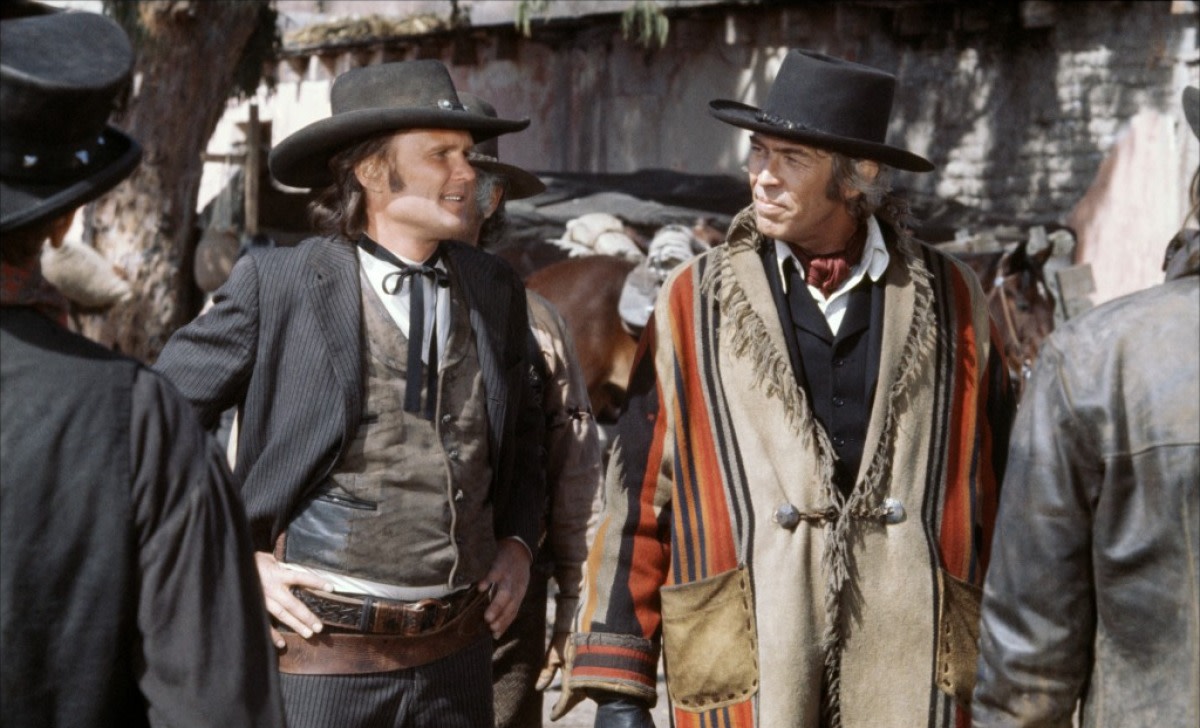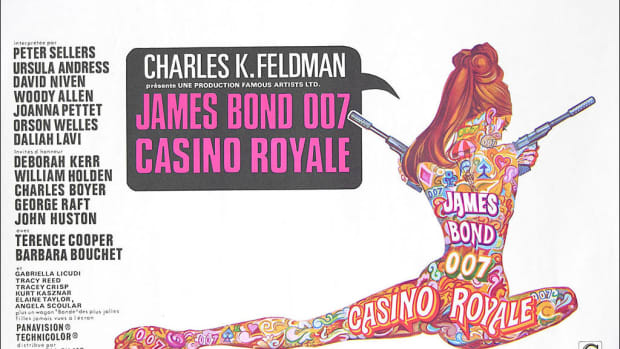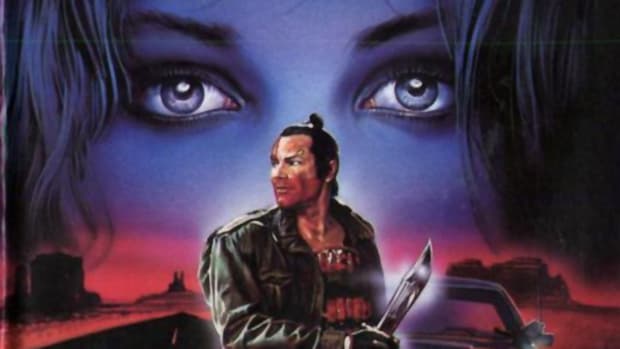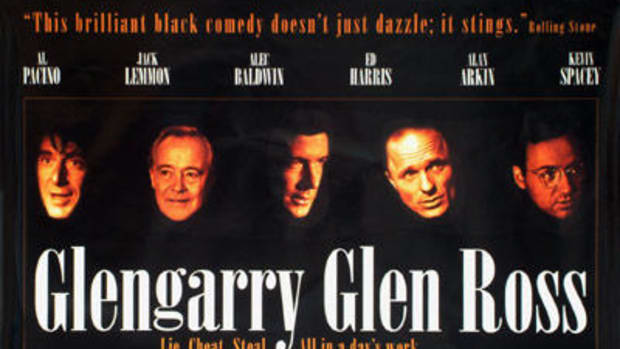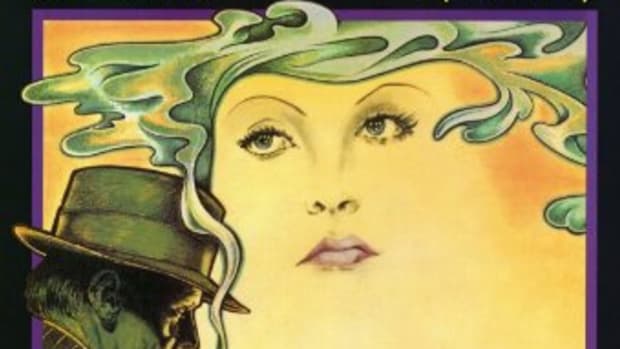Riders On The Storm: The Making Of Pat Garrett And Billy The Kid
Durango, Mexico, 1974, and in a darkened hotel suite, Sam Peckinpah hunkers down with his cast and crew to watch the dailies of the in-production Pat Garrett And Billy The Kid. Peckinpah’s had a helluva day – he spent the morning rowing with the money men and the afternoon warring with his actors in pursuit of elusive perfection. But not only is Peckinpah pissed off, he’s pissed. Of course, the massive amounts of alcohol he’s imbibed – topped off with the odd snifter of cocaine – have done little to improve the director’s mood. So when the projector fires up and the screen fills with a blurred image, Peckinpah is as far from happy as Neath is from Nagoya. Not that he’s a man to suffer in silence. Polishing off the last in a long series of scotches, Peckinpah gets to his feet, waddles through the crowd, undoes his Levi’s and proceeds to urinate over the bed sheet that’s doubling as a movie screen. Thirty seconds later, with the screen soaked, Peckinpah zips-up his jeans and turns to face the astonished actors and execs. A huge smile plays across his cracked lips. Sam Peckinpah has made his point – emphatically.
In the land of the maniac director, David Samuel Peckinpah is king. A man who drank as if they were about to reinstate Prohibition, inhaled like Colombia had found a new cash crop, and bedded whores in numbers that would make Charlie Sheen jealous, it’s amazing Peckinpah was ever sufficiently sober to make movies. That he made films as ground-breakingly bloody as The Wild Bunch and as elegiac as Pat Garrett And Billy The Kid borders on the miraculous.
Penned by acclaimed novelist and screenwriter Rudy Wurlitzer (Two-Lane Blacktop), Pat Garrett And Billy The Kid represents the last word on the Western for a lot of people. Kris Kristofferson is excellent, if a little too old, as Billy, who’s delighted to receive a visit from his compadre Pat (James Coburn), only for Garrett to tell him that, in five days time, he’ll return wearing a badge to bring The Kid to justice. Keen not to spend the rest of his life behind bars, Billy tries and fails to make a new life for himself in Mexico only to return to his Fort Sumter base, where, having wiped out the rest of The Kid’s gang, Garrett awaits a final confrontation with his old friend.
The tale of Pat Garrett and Billy The Kid had long fascinated filmmakers. For Sam Peckinpah, however, the story wasn’t an interest but an obsession. The director spent the best part of 15 years trying to bring it to the big-screen, sacrificing his fortune and his health into the bargain. Peckinpah’s reason for wanting to film the greatest of Western legends was that the same story others viewed as a romantic tale Peckinpah considered a damning indictment of the Old Western sub-genre, proving that the ‘civilised’ ways of the 1880s that William Holden and Ernest Borgnine reminisce about in pre-World War I The Wild Bunch were every bit as low down, dirty and without honour. That Peckinpah saw himself as the last of a dying breed also attracted him to the project. “The outlaws of the Old West have always interested me,” he once remarked. “I’m something of an outlaw myself.”
But just because he was well qualified didn’t mean Garrett was going to give Peckinpah and his movie-making posse an easy ride. Indeed, even after going through a world of hurt to get the movie in the can, Bloody Sam’s dream project very nearly turned into a never-ending nightmare.
"Pat Garrett And Billy The Kid was the last film I made with Sam,” sighs veteran character actor and long-time Peckinpah favourite L.Q. Jones. “I suppose it’s only natural that I feel sadness about it,” continues the man who also worked with Peckinpah on the classics Ride The High Country and The Wild Bunch. “But the fact I never got to work with him again was nowhere near as upsetting as the condition he was in while making that movie. The first day that I arrived on set, I found myself confronted by this thin, white, ghost of a man. It wasn’t until he came over and shook my hand that I realised it was Sam. He looked 70 years old and likely to die at any minute.”
Peckinpah – who was only 47 at the time he shot Pat Garrett – had good reason for looking somewhat past his prime. Besides his hard living, his pursuit of the Billy The Kid story had also taken its toll. What made the chase all the more frustrating was that Peckinpah’s first job in feature films had been to write and direct 1961’s One-Eyed Jacks, a poorly camouflaged take on Pat and Billy’s relationship. But no sooner had he turned in the script than the film’s producer and star Marlon Brando fired Peckinpah, hired new writers and a new director – Stanley Kubrick – then gave them the boot and made the film himself. Twelve long years passed before Peckinpah could convince a major studio – MGM – that he was sufficiently bankable and trustworthy to be let loose on his pet project.
Aware of Peckinpah’s peccadilloes (he fought so hard with the producers on his Cavalry epic Major Dundee that he was barred from the editing suite), MGM were careful to put a leash on their new employee. While Sam wanted to film in Arizona for reasons of authenticity, no-nonsense exec Jim Aubrey – hired to ride the company through one of its roughest periods– insisted on taking the production south of the border to Mexico to cut costs. And when Peckinpah put forward Wild Bunch alumni Bo Hopkins for the role of Billy, Aubrey immediately nixed the idea, “suggesting” Sam give the role to Kris Kristofferson, then a very hot acting and singer talent.
More...
Although he wasn’t his first choice, Kristofferson got on pretty well with the man some called The Monster. “Sam was great. Completely mad, of course, but few people in movies had his guts.” The director also got along with another singer who became involved in the film, Bob Dylan, even if, as writer Rudy Wurlitizer remembers, their first meeting was memorable for all the wrong reasons. "Bob and I were walking up to Sam’s house late one night, when there was a scream and a terrified maid ran out. Then we heard a gunshot and I thought, 'Oh, man, this is going to blow the whole thing with Bob.' We found Sam standing in front of this mirror, completely naked. The mirror was totally blown and he had a bottle in one hand and a gun in the other. And I said, 'Sam, this is Bob Dylan.'"
While Dylan might have been wondering what he was getting himself into, Peckinpah was upfront about wanting to make the performer’s timeless songs a part of his movie mosaic. He also thought there was money to be made from putting Dylan on-screen, so the erstwhile Mr Zimmerman was handed the role of Billy’s lieutenant Alias (“Alias what?” “Alias anything you please.”) And so it was that Peckinpah and his rag-tag posse headed down Mexico way with a dream of making a classic Western and an assortment of narcotics that made Hunter S. Thompson’s “provisions” for his weekend in Las Vegas look like a tin of travel sweets.
Watch Pat Garrett And Billy The Kid today and you can’t help but notice that some parts of the picture have a rather hazy quality. Such fuzziness isn’t really surprising given the amount of alcohol that was consumed during the lengthy shoot. Kris Kristofferson admits to drinking upwards of a pint of whiskey a day. But Pat Garrett’s real baron of booze was Sam Peckinpah. "He was really drinking by this time,” remembers L.Q. Jones. “He’d drunk a lot in the past, but now you never saw him without a beaker of something in his hand. He’d get a big glass, fill it with ice, liquor and grenadine and he’d just keep on top it up over the course of the day.”
And the more Sam drank, the more erratic his behaviour became. Not content with pulling his pink pistol out in the screening room, he pulled a real revolver on supporting player Harry Dean Stanton. The alcohol also fuelled Peckinpah’s hatred of producers, something that was a constant throughout his film career. “Sam’s problem was that he found himself fighting with the execs every day,” comments Kristofferson. “Whether it was Sam’s fault or the producers, I don’t know, but it makes it a very hard way to make a living.”
Peckinpah, however, loved pulling one over on his superiors, especially brassnecks like Jim Aubrey. During pre-production, Aubrey forbad Sam from filming a scene in which Garrett enjoys some sport with a frontiersman on a raft. “It was a scene that added nothing to the plot,” recalls editor Garth Craven. “But in terms of the movie’s mood, it was a crucial sequence. When the producers told Sam the scene had to go, you knew he was going to find a way around it. So, after we’d been forbidden from using the word ‘raft’ on-set, we all got up at the crack of dawn one day, went over to the river together with a makeshift raft that the props guys had assembled, and shot the scene. We got everything we needed long before the official day’s shooting was due to begin. Sam was so delighted at getting the scene and sticking it to the producers that he grinned the entire day.”
Yep, there was nothing straightforward about the Peckinpah approach to filmmaking. But while some gasped each time he tempted fate, Sam’s regular collaborators could see the method in his madness. For example, James Coburn – who’d first worked with Peckinpah on Major Dundee – knew that the director’s arguments with actors were often for the good of the movie. “Sam makes his films like a sculptor sculpts marble - chipping away here, chipping away there and finally revealing what is actually there. Wherever there’s no conflict, he makes conflict, because that is the nature of film. When I was playing Garrett, every now and then he'd tell me, ‘Say that line again.’ I’d said it perfectly, but he'd say, ‘Say that goddamned line again!’ So you'd say it again, and then he'd say, ‘Say it again, damn it!"’ He'd push you all the way. It wasn't anything against you; he was just looking for something in the character, something that would make the film better.”
“For about four hours a day on Garrett he was brilliant,” agrees L.Q. Jones. “He was as smart and as sharp as he had ever been. And it was during that time that he made this amazing film. But by lunch, he was shot. And by the time the evening meal was served, it was all he could do to walk home unaided.”
It was during one of these headier moments that Peckinpah – who has a small role in the film as Will, the undertaker Garrett talks to before killing The Kid – made a very strange suggestion to James Coburn. “We were about to shoot the climax, when Sam came up to me and said, ‘How about if we don’t kill him?’ I said, ‘What?’ And he replied, ‘Yeah, how about if we don’t kill Billy?’ I just looked at him, amazed. Finally, my wits returned to me and I said, ‘Sam, you can do pretty much anything you want but we are going to kill Billy The Kid!’”
Indeed, Peckinpah did shoot the scripted climax. He also filmed a bit of business after Billy’s death in which Garrett shoots his reflection in a mirror. It was the very act Bob Dylan had found Sam in the middle of during their first encounter and it was feat Peckinpah repeated a number of times in his motel room during the shoot.
Broken mirrors and Sam’s bar bill couldn’t account for Pat Garrett And Billy The Kid wrapping $1.5 million over budget. Despite Jim Aubrey’s best intentions, Peckinpah had taken charge of the production and ridden it like a wagon with a loose wheel. Aubrey, however was to have his revenge. When Peckinpah previewed his cut of the film, the execs looked at the negative feedback, married it with Sam’s overspending and MGM’s parlous financial state and decided on the most financially lucrative course of action. This meant cutting 14 minutes out of the film to maximise the number of times the now sub-two hour movie could be screened of an evening, and then releasing the picture with the sort of fanfare usually reserved for a village fate.
Of course, Pat Garrett couldn’t survive such treatment and the butchered cut died at the box-office, unsung by all except Peckinpah’s most ardent admirers. While such a conclusion might have suited so melancholy a tale, the Pat Garrett story was not to end so ignominiously. On the day of that last preview – after which the producers immediately decided to slice up the film – members of the editing team rushed to the projection booth and spirited away the reels of film on studio messenger boys’ bicycles. They then held on to them for the better part of 20 years.
The unveiling of the “director’s cut” of Pat Garrett And Billy The Kid resembled the fuss that was made when that shepherd stumbled upon The Dead Sea Scrolls. In truth, this version of the film was only an early director’s cut – some scenes play too long and one key sequence is missing. But as it provided audiences with a chance to see something approaching Peckinpah’s vision, the re-release also enabled people to rediscover this rare gem of a film. Sure, there have been Westerns since Pat Garrett but the movie draws such a thick bloody line under his beloved genre, it’s hard to see films such as Unforgiven as anything but the appendix to Peckinpah’s devastating final chapter. It’s almost as if all the filmmakers of the world understood what Peckinpah’s cohort Dub Taylor meant when he said: “After Sam gets through with this film, nobody will ever make a picture about Billy The Kid again. This is it!”
Of course, the film wasn’t Hollywood’s final word on The Kid, and nor was it the last will and testament of David Samuel Peckinpah. Though fighting ill-health and increased marginalisation, the industry’s toughest S.O.B. would go on to make the brilliant if bizarrely autobiographical Bring Me The Head Of Alfredo Garcia and Cross Of Iron, heralded by Orson Welles as the greatest anti-war film ever made. And as he managed to keep making films, Peckinpah continued to wage his own war on life, a conflict he fought in accordance with his own rules of engagement.
Yes, Peckinpah was an outlaw – in years to come, he would occupy a place on the Western landscape alongside those he’d held-up and beaten down. And like all hired guns, death came to him soon and quickly – he died of a massive heart attack aged just 59. Of course, had he lived, he might have eked out a few more movies. But that wouldn’t have suited Sam Peckinpah – a man born to eek out nothing except the last few bullets from a rapidly emptying revolver.
Epilogue – The following is undeniably indulgent but I hope you’ll find it interesting. When this piece first appeared on Sabotage Times, Repo Man director Alex Cox - who I’ve become friendly with over the years – dropped me a line to say how much he’d enjoyed it. Naturally, I was both touched and chuffed. It’s what Alex said next, however, that really sent shivers up the spine. For back in 1987, Alex Cox collaborated on a great movie called Walker with Pat Garrett screenwriter Rudy Wurlitzer. And as Rudy had alerted Alex to my article in the first place, so he’d also been good enough to say how much he liked it. If you ever wonder why someone chooses a career in writing, it has nothing to do with fleeting things like money and awards. It’d because of moments like the one I’ve just described.
Follow Richard on Twitter @RMGLUCK2017
